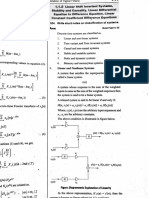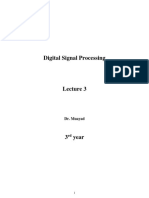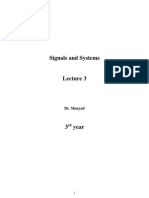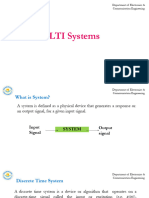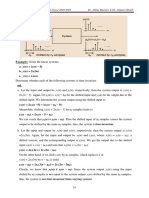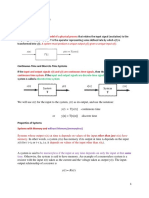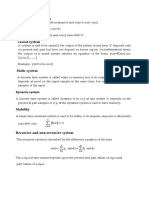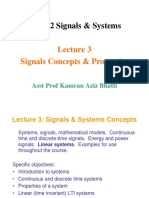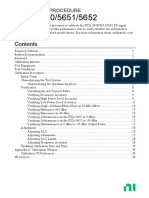0% found this document useful (0 votes)
114 views8 pagesChapter 2 System
1. The document discusses different types of systems and their properties. It defines a system as an entity that processes input signals to produce output signals.
2. Systems are classified based on properties such as being continuous-time or discrete-time, stable or unstable, having memory or not, being invertible or not, being time-invariant or time-variant, and being linear or nonlinear.
3. It provides examples to illustrate stable and unstable systems, time-invariant and time-variant systems, linear and nonlinear systems, and causal and non-causal systems. Memoryless, continuous-time, discrete-time, and stable systems are defined and distinguished.
Uploaded by
عظات روحيةCopyright
© © All Rights Reserved
We take content rights seriously. If you suspect this is your content, claim it here.
Available Formats
Download as PDF, TXT or read online on Scribd
0% found this document useful (0 votes)
114 views8 pagesChapter 2 System
1. The document discusses different types of systems and their properties. It defines a system as an entity that processes input signals to produce output signals.
2. Systems are classified based on properties such as being continuous-time or discrete-time, stable or unstable, having memory or not, being invertible or not, being time-invariant or time-variant, and being linear or nonlinear.
3. It provides examples to illustrate stable and unstable systems, time-invariant and time-variant systems, linear and nonlinear systems, and causal and non-causal systems. Memoryless, continuous-time, discrete-time, and stable systems are defined and distinguished.
Uploaded by
عظات روحيةCopyright
© © All Rights Reserved
We take content rights seriously. If you suspect this is your content, claim it here.
Available Formats
Download as PDF, TXT or read online on Scribd
/ 8
